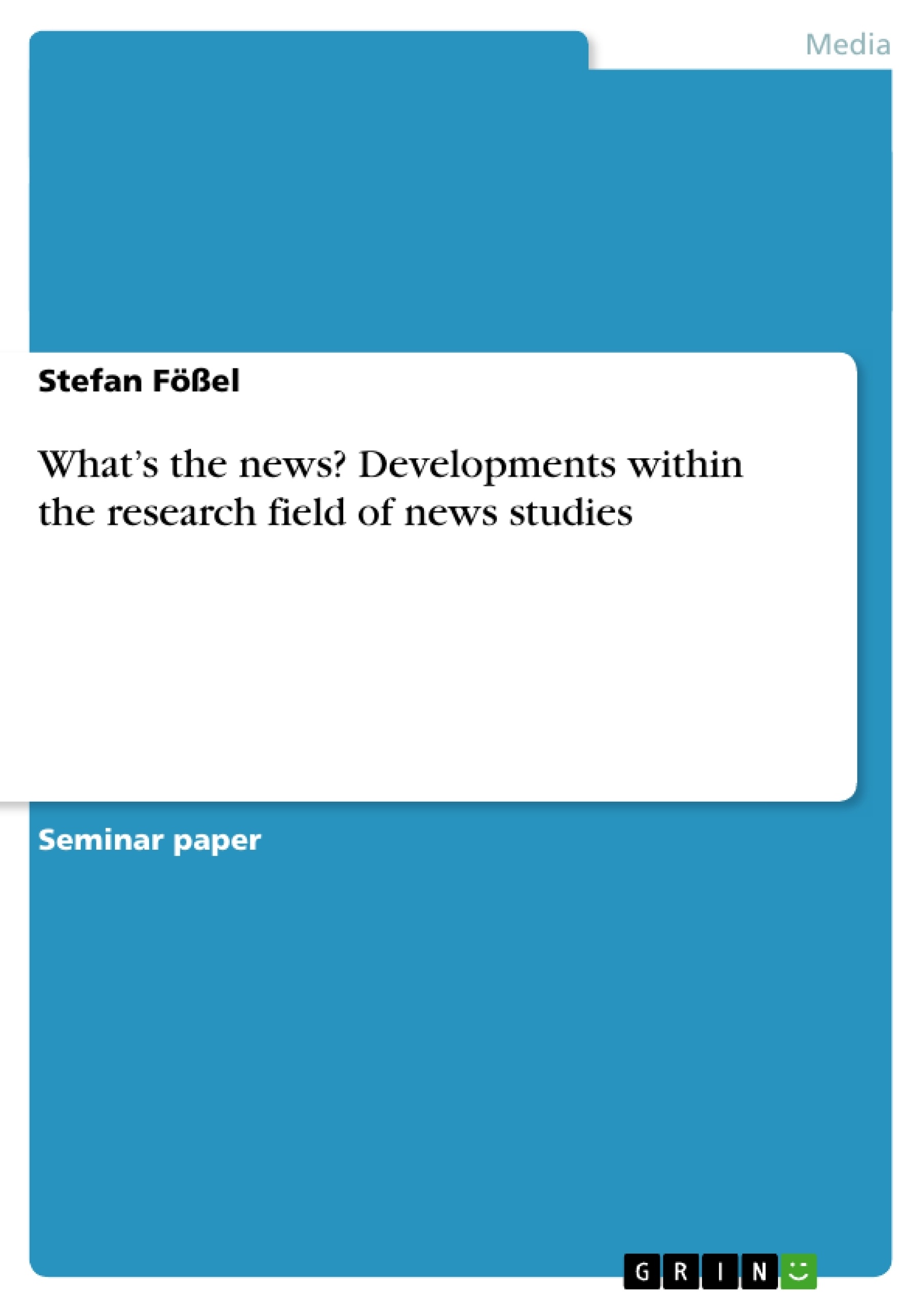What makes news? A question providing continuous stimulation to a special field of media research: the news studies. News studies form the part of media and culture studies dealing with news in mass media. They give attention to choice, composition and topics of news. Relating to Harold D. Lasswells renowned question ‘Who says what in which channel to whom with what effect?’ (Lasswell 1964: 93) defining the research fields of communication science, they are mostly about the ‘what’, the content, the product, the news. What kind of circumstances turn an event into news? What makes it valuable enough to be published? And what is the currency? The New York Times puts it since 1896 into the slogan ‘All the news that fit to print’. But it’s obviously not that simple to explain. Otherwise there wouldn’t have been such intensive research and controversial discussions for so many years. News studies go back to the 1920s, when Walter Lippmann started researching origin, flow and value of news. Since then many models and theories have been developed. Nowadays news studies or news theories are collective terms for widespread models dealing with gatekeepers (the ‘who’ in Lasswells formula), news flow, news value, news composition, news bias, and agenda setting. This essay tries to sum up some of the most important theories concerning the choice of news, especially news value theories and gatekeeper studies. Voices being critical of the classic theories will also be mentioned. Of course a universally valid answer to the question ‘What’s the news?’ cannot be given. But maybe some references.
Inhaltsverzeichnis (Table of Contents)
- Abstract
- Keywords
- Introduction
- Gatekeepers - the subjective power of decision makers
- New(s) studies in old Europe
- Galtung/Ruge - 40 years after
- Conclusion: Tailor-made news fit everybody
- References
Zielsetzung und Themenschwerpunkte (Objectives and Key Themes)
This essay aims to provide a concise overview of key theories within news studies, particularly focusing on news value theories and gatekeeper studies. It examines the historical development of these theories, explores their application in the context of news selection, and considers critiques of their limitations.
- News value theories and their role in news selection
- The gatekeeper concept and its impact on news flow
- The influence of subjective factors on news decision-making
- The evolution of news studies from historical perspectives
- The relationship between news studies and agenda-setting
Zusammenfassung der Kapitel (Chapter Summaries)
- Abstract: This chapter introduces the field of news studies, defining its scope and objectives. It highlights the central question of what constitutes news and outlines the key areas of research, including news value theories, gatekeeper studies, news flow, and news bias.
- Introduction: Drawing on Walter Lippmann's work on public opinion, this chapter explores the concept of news value as a crucial tool for journalists in selecting and constructing news. It emphasizes the routine judgments and standardized processes employed by news media in shaping public perception of reality.
- Gatekeepers the subjective power of decision makers: This chapter delves into the concept of "gatekeepers" in media research, focusing on the role of decision-makers in selecting and disseminating news. It examines the influence of subjective factors, organizational constraints, and audience expectations on news selection, using the example of a telegraph editor.
Schlüsselwörter (Keywords)
The primary focus of this essay is on the news studies research field, encompassing key concepts such as news value, gatekeeper, news flow, and agenda-setting. The essay explores the theoretical framework of these concepts, examining their historical development and contemporary relevance within the context of news selection and media communication.
- Citar trabajo
- Stefan Fößel (Autor), 2006, What’s the news? Developments within the research field of news studies, Múnich, GRIN Verlag, https://www.grin.com/document/73167



